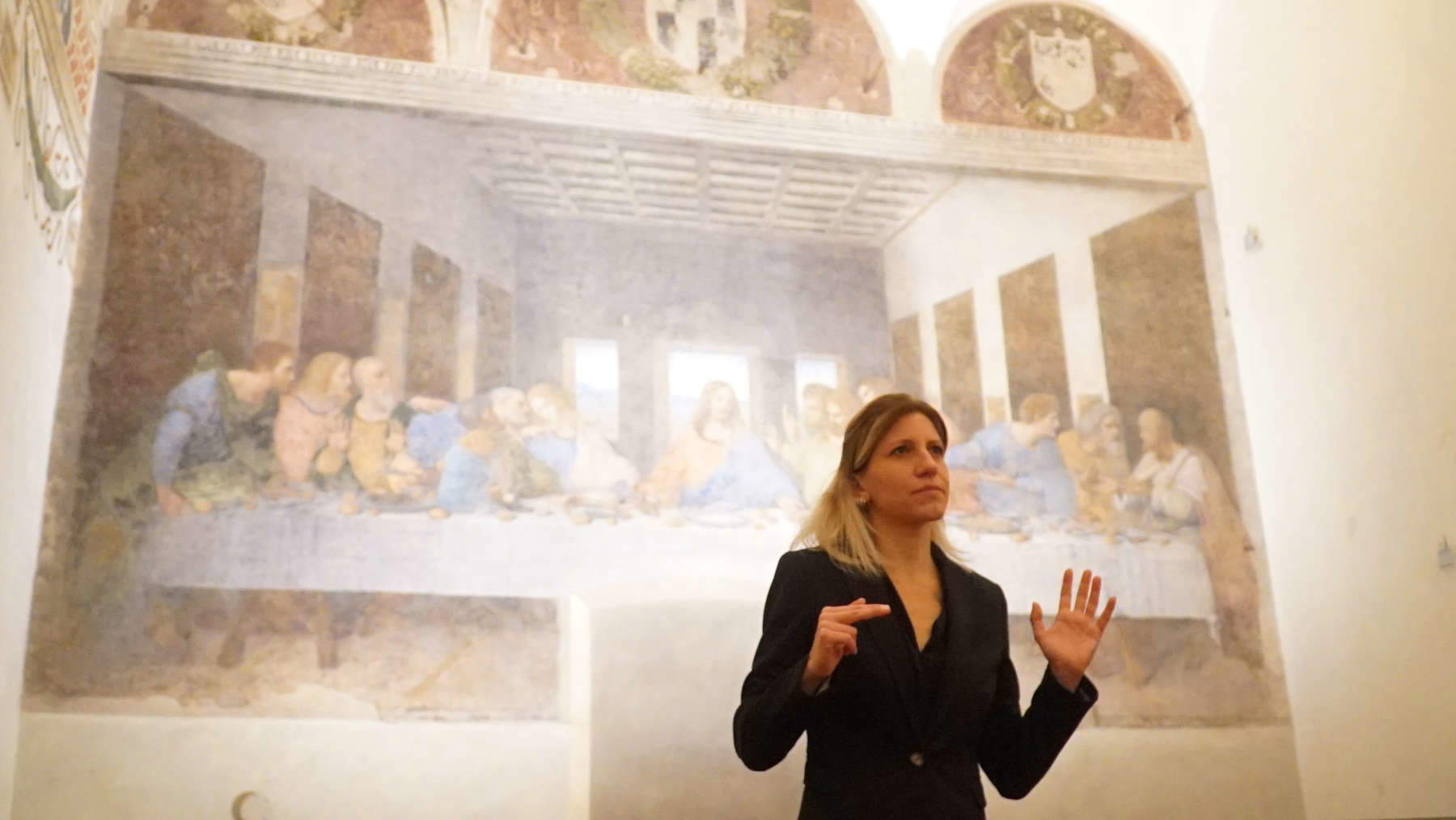Culture becomes more inclusive in Lombardy thanks to Musei Polisensoriali, a project promoted by the Lombardy National Museums Regional Directorate to ensure accessibility to the region’s museums and archaeological, artistic and historical heritage . Financed with funds from the PNRR - Next Generation EU (173,500 euros is the cost of the project), the program aims to remove sensory and cognitive barriers that limit access to people with disabilities.
The regional directorate, established in 2015 to coordinate 13 state museums in the Lombardy region, thus confirms its commitment to expanding museum enjoyment, making culture a shared and universal right.
“Aware that our commitment to full accessibility does not end today but requires continuous and constant planning,” comments regional director Rosario Maria Anzalone, “we want with this project to continue the path taken by the General Directorate for Museums, moving from the conviction that the enjoyment of cultural heritage is a universal right, and that our duty is therefore to guarantee it by consequently promoting the elimination of any barrier, whether physical, sensory or cognitive. I thank Emanuela Daffra, who preceded me as head of the Regional Directorate, for conceiving and initiating this project, the final results of which I am proud to present today.”

The Polysensory Museums project is developed in three main actions:
Training to sensitize museum staff to disability-related issues.
Implementation of specific aids, such as videos, tactile paths and audio descriptions, based on the Universal Design approach.
Co-creation of visit routes, designed together with organizations and associations that deal with disabilities.
The initiatives follow the guidelines of the UN Convention on the Rights of Persons with Disabilities and include the direct involvement of associations such as the Fondazione Istituto dei Ciechi di Milano, the Ente Nazionale Sordi and the Lega del Filo d’Oro.
The first phase focused on training museum staff, with courses aimed at reception operators, directors and educational designers. The meetings, held in collaboration with specialized institutions, provided theoretical and practical tools for understanding the different forms of disabilities-visual, hearing, and cognitive-and identifying solutions to facilitate access to cultural heritage.
The second phase of the project led to the creation of aids designed to adapt to the needs of all visitors, according to the Design for All approach. These include: Videos in LIS (Italian Sign Language) for people with hearing disabilities, tactile paths and relief drawings, along with audio descriptions according to the Descrivedendo method, for the visually impaired, and facilitated guides, written in easy-to-read format and with the support of Alternative Augmentative Communication (AAC), for people with cognitive disabilities.
The aids, while following a common methodology, have been adapted to the peculiarities of individual museum venues, ensuring a “tailor-made” approach that takes into account the specificities of each context.


In the final phase, itineraries were organized to visit museums, developed together with the institutions involved and designed for a diverse audience. These itineraries not only experiment with new tools, but also allow the exploration of cultural heritage through innovative use of the senses.
The itineraries, led by specialized operators and museum staff, will soon be extended to all visitors, including people without disabilities, with a view to total inclusion. This approach enriches the cultural experience, proposing new ways of enjoyment capable of breaking down any barrier.
The Polysensory Museums project was made possible thanks to the collaboration between institutions, associations and professionals. Project partners include Fondazione Istituto dei Ciechi di Milano, Fondazione Paideia Ente Filantropico di Torino, Associazione Nazionale Subvedenti ANS di Milano, Lega del Filo d’Oro, Associazione L’abilità Onlus, Istituto dei Ciechi Francesco Cavazza - Museo Anteros, Ente Nazionale Sordi Consiglio Regionale Lombardia. In addition to the associations, the project has technical support from Archimedia181 s.r.l., which contributed to the design of the aids.
Funded with 173,500 euros under the PNRR - Culture Mission, Polysensory Museums, the project falls under the measure “Removal of physical and cognitive barriers in museums, libraries and archives.” In the coming months, the Lombardy Regional Museums Directorate will continue to promote initiatives that consolidate the path taken, demonstrating that inclusivity is not just a goal, but a viable way to enhance cultural heritage in a universal way.
 |
| Polysensory museums: inclusivity and culture for all in Lombardy |
Warning: the translation into English of the original Italian article was created using automatic tools. We undertake to review all articles, but we do not guarantee the total absence of inaccuracies in the translation due to the program. You can find the original by clicking on the ITA button. If you find any mistake,please contact us.